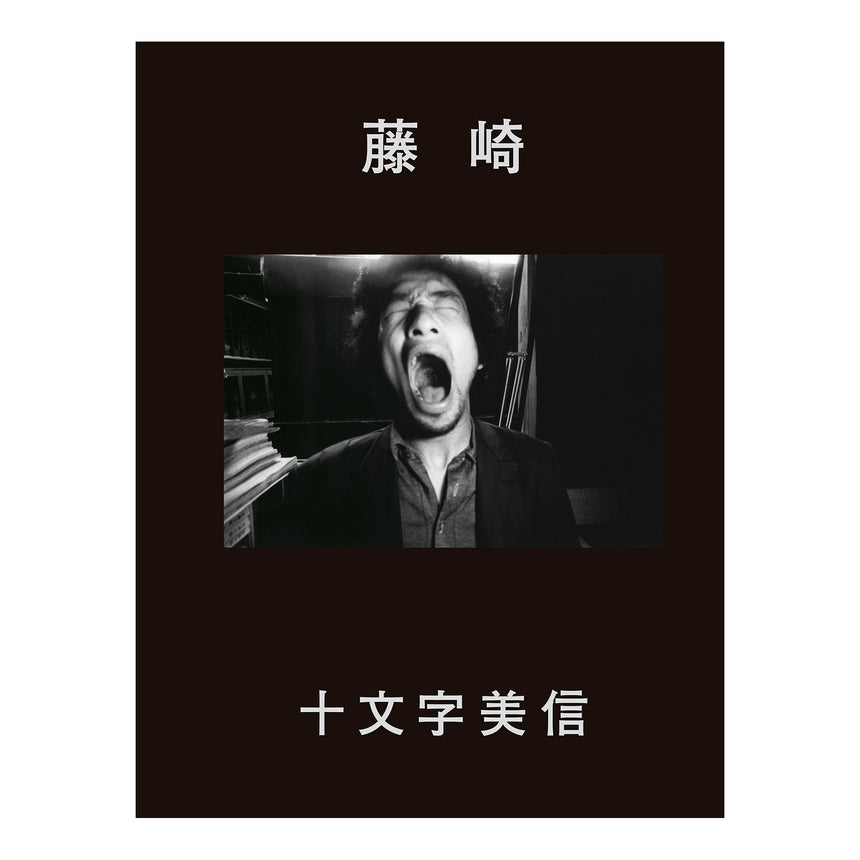Fujisaki / 藤崎
Bishin Jumonji
(十文字美信)
¥7,200 JPY
I took the photographs in this book Fujisaki during the period from the late 1960s to the early 1970s, when I had not yet become a professional photographer. This was practically my first work
I was a student of Kanagawa Technical Senior High School in Yokohama when I met Masaki Fujisaki, the subject captured in these photographs, for the first time. He was 15 years old and I was 16 years old then. Although it was 57 years ago, I can still recall the moment quite vividly. He showed up long-haired, wearing black leather pants and boots and smelling like hair liquid. He was also wearing a button-down shirt, which was not so common in those days.
As we became close, we found there was chemistry between us, and we would hang out together almost every day. We frequented Chigusa, a Jazz cafe in Noge, Yokohama, to listen to modern jazz that was fashionable then, requesting records by musicians such as Ornette Coleman, John Coltrane, Eric Dolphy and so on. Excited by Scorpio Rising, the movie by Kenneth Anger, we tried to follow the way of life of Beatniks, such as William Burrows, Allen Ginsberg, and Jack Kerouac. And we often drank whiskey together. It was also he who introduced me to Kazuo Ohno, one of the pioneer butoh dancers. This was at a time before rock 'n' roll and punk were widely accepted.
Back then, I had no idea which direction to head for the future. Nevertheless, I was somewhat big-headed and full of baseless confidence. I did not know where my self-confidence came from but, honestly, I just wanted to do something different from what others did and otherwise I would not care; that was all.
When I began to pursue a path as a photographer at the age of 20 by chance, I decided to take photographs of Fujisaki to keep a record. I went to Yumenoshima, a reclaimed island on the Tokyo Bay coast, riding on my 'chopped' motorbike, a Tohatsu Runpet. We frantically ran around along the long straight road and eventually destroyed my bike and set fire to its gas tank.
Fujisaki's wildly laughing face seemed to be proof of my excitement.
His voice heard through my viewfinder was my own shouting, and my act of photographing him felt like I was observing myself back then.
w21x h28 cm
72 Pages
34 Images(b&w)
Hard cover
Doubletone Offset
Firstd edition of 700
Published in 2020
ISBN 978-4-908512-92-6
本書『藤崎』に掲載した写真は、写真家になる以前、1960年代末から’70年代初頭にかけ数回に分けて撮影した。私の初めての作品と言える。
被写体の藤崎正記と出会ったのは神奈川工業高等学校時代で、彼が15歳、私が16歳の頃だ。57年前だがその時のことを今でも鮮やかに思い出せる。長髪、黒革のパンツに黒いブーツ、ヘアーリキッドの匂いをさせて現れ、当時珍しいボタンダウンのシャツを着ていた。
親しくなるに従い意気投合して毎日のように待ち合わせ、よく遊んだ。横浜野毛のジャズ喫茶「ちぐさ」へ通い、オーネット•コールマンやジョン•コルトレーン、エリック•ドルフィーなどをリクエストして当時流行したモダンジャズを齧った。ケネス•アンガーの「Scorpio Rising」を観て興奮し、ウィリアム•バロウズ、アレン•ギンズバーグ、ジャック•ケルアックなどビートニックに影響され生活スタイルを真似ようとした。そしてウィスキーをよく飲んだ。
暗黒舞踏家大野一雄さんを紹介してくれたのも藤崎だった。ロックやパンクが主流になる前の時代だ。
当時の私は何処へ向かっていいのかわからなかった。そのくせ、自惚れと確証のない自信だけはあった。自信の出どころははっきりしないまま、ただただ、人と違うことをやりたい、あとはどうにでもなれが本当のところだったろう。
偶然のきっかけから写真家を志した20歳の時、藤崎の姿を写真に残しておこうと思った。50ccのトーハツランペットをチョッパーに改造して、当時「夢の島」と呼ばれた東京湾の埋立地へ向かった。長い直線道路を二人で狂ったように走り回り、最後はバイクを壊してガソリンタンクに火を点けた。
藤崎の滅茶苦茶な笑顔は私自身の興奮の証に思えた。
ファインダーの中から聞こえる彼の声は私の叫びであり、藤崎を撮りながら自分自身を見つめている気がしていたのだ。
十文字美信
W21 x h28 cm
72 ページ
34 イメージ(白黒)
上製本
白黒オフセット印刷
初版700部
Published in 2020
ISBN 978-4-908512-92-6





















